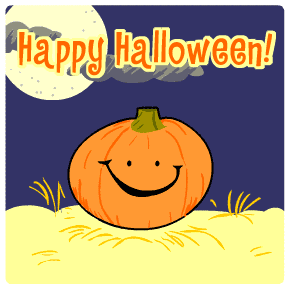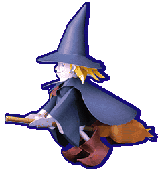 Halloween
is one of the oldest holidays with origins going back thousands of years. The
holiday has had many influences from many cultures over the centuries. From the
Roman's Pomona Day, to the Celtic festival of Samhain, to the Christian holidays
of All Saints and All Souls Days. Halloween
is one of the oldest holidays with origins going back thousands of years. The
holiday has had many influences from many cultures over the centuries. From the
Roman's Pomona Day, to the Celtic festival of Samhain, to the Christian holidays
of All Saints and All Souls Days. Hundreds of years ago in what is now Great
Britain and Northern France, lived the Celts (凯尔特人), who worshipped (崇拜) nature
and had many gods, with the sun god as their favorite. They celebrated their New
Year on November 1st which was made every year with a festival and marked the
end of the "season of the sun" and the beginning of "the season
of darkness and cold." On October 31st after the crops were all harvested
and stored for the long winter the cooking fires in the homes would be extinguished
(消失). The Druids, the Celtic priests, would meet in the hilltop in the dark oak
forest (oak trees were considered sacred). They would light new fires and offer
sacrifices of crops and animals. As they danced around the fires, the season of
the sun passed and the season of darkness would begin.  When
the morning arrived the Druids would give an ember from their fires to each family
who would then take them home to start new cooking fires. These fires would keep
the homes warm and free from evil spirits. The November 1st festival was
called Samhain (pronounced "sow-en"). The festival would last for 3
days. Many people would parade in costumes made from the skins and heads of their
animals. This festival would become the first Halloween. The Celtics would
carry a lantern (灯笼) when they walked on the eve of October 31. These lanterns
were carved out of big turnips (大头菜) and the lights were believed to keep the
evil spirits away. Children would carve faces in the turnips. These carved turnips
were called "jack-o-lanterns. It is said that the "jack-o-lantern"
got its name from a stingy (吝啬的) and mean old man, named Jack, who when he died
was too mean to get into heaven. When Jack went to hell he was meet by the Devil
who gave him a piece of burning coal and sent him away. Jack placed the burning
coal in a turnip to use as a lantern to light his way. The legends claim that
Jack is still walking with the lantern looking for a place to stay.  When
the early settlers came to America they found the big round orange pumpkin. Being
larger and much more colorful than turnips, the pumpkin made great "jack-o-lanterns".
Eventually the pumpkin would replace the turnip. Eventually the Pumpkin would
become the most widely recognized symbol(象征)of the Halloween holiday. When
the early settlers came to America they found the big round orange pumpkin. Being
larger and much more colorful than turnips, the pumpkin made great "jack-o-lanterns".
Eventually the pumpkin would replace the turnip. Eventually the Pumpkin would
become the most widely recognized symbol(象征)of the Halloween holiday.
The
history of "Trick'O'Treating" can be traced back (追溯) to the early celebrations
of All Soul's Day in Britain. The poor would go begging and the housewives would
give them special treats called "soulcakes". This was called "going
a-souling", and the "soulers" would promise to say a prayer for
the dead. Over time the custom changed and the town's children became the
beggars. As they went from house to house they would be given apples, buns (圆形的小甜面包),
and money. During the Pioneer days of the American West, the housewives would
give the children candy to keep from being tricked. The children would shout "Trick
or Treat!". | 